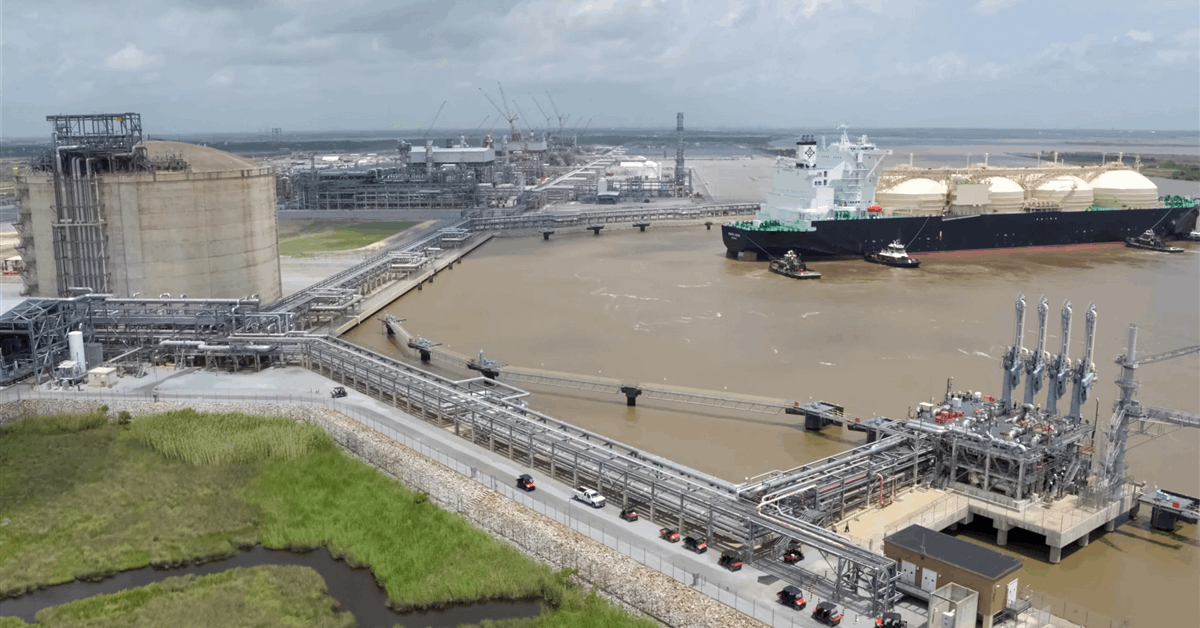
Oil market concerns over Middle East hostilities became almost exclusively focused over the past week on the Strait of Hormuz and the potential for short-term disruption.
That’s what analysts at Standard Chartered Bank, including the company’s commodities research head Paul Horsnell, think, a new report sent to Rigzone by the Standard Chartered Bank team on Tuesday revealed.
“We do not think any increase in general Middle East risk or other geopolitical implications was priced in; the Strait of Hormuz was the key factor, with potential damage to Iran’s export infrastructure also playing a role, albeit a lesser one,” the analysts said in the report.
“The conclusion of the immediate hot war has seemingly removed Hormuz worries almost completely from the market, creating the catalyst for the sudden removal of all the past two weeks’ price gains,” they added.
“The apparent change in President Trump’s rhetoric towards a more dovish and less interventionist stance has provided further fuel for the downwards move now that the Hormuz effect has largely been removed from market pricing,” they continued.
In the report, the Standard Chartered Bank analysts said they have argued that the threat to Hormuz was always a defensive strategy for Iran, “a threat kept credible in order to deter attacks on Iran’s oil export infrastructure, especially the Kharg Island loading facilities”. They added that “the movement into a quieter phase of the conflict leaves the Hormuz questions unanswered”.
“An Iranian policy maker could argue that a credible threat to Hormuz transits succeeded in deterring significant attacks on its export infrastructure, whereas a U.S. policy maker could argue that the threat to Hormuz was not credible because of the projection of U.S. naval and air power,” the analysts noted in the report.
“In other words, the lack of disruption in the Hormuz Strait is likely to be seen by both sides as a vindication of their strategy, which would suggest that little can be assessed from the past week in terms of the true nature of Hormuz transit risks,” they went on to state.
The Standard Chartered Bank analysts highlighted in the report that front-month Brent “spiked as high as $81.40 per barrel at open in the wake of the 22 June U.S. bombing of nuclear targets in Iran”. They also pointed out that at time of writing their report, the price had fallen $13.50 per barrel.
“Volatility has also spiked, with 10-day Brent realized annualized volatility at 66.0 percent at settlement on 23 June, a week on week increase of 23.6 percentage points and the highest volatility since mid-July 2022,” the analysts stated in the report.
“30-day Brent realized annualized volatility was 45.0 percent at settlement on 23 June, 11.7 percentage points higher week on week,” they added.
The analysts went on to warn in the report that tail risks still abound in the oil market.
“One upside risk is that the recent history of Middle East ceasefires is at best checkered; most ceasefires have, to varying degrees, proved fragile,” they noted.
“The second risk that we think is underpriced is fundamental: the market remains extremely tight, with U.S. inventories in particular well below normal levels … in addition, the absence of the large surpluses that consensus has been expecting for well over year (even after OPEC+ production increases) suggests that consensus supply-demand models are likely mis-calibrated,” they added.
They also warned in the report that there are downside tail risks.
“Most notably we have yet to see a significant change in the output figures of some of the key underperformers in terms of the promises made to OPEC+ partners; this implies to us that OPEC+ is not yet in an equilibrium in terms of sharing of the load,” they highlighted.
“The overall macroeconomic backdrop represents another downside risk; while we have to yet to see any significant falling away of oil demand growth, the uncertainty caused by U.S. trade and economic policies is keeping sentiment biased towards the bearish,” they added.
“Investor positioning also remains bearish; extraordinarily in the run-up to an escalation of Middle East conflict our NYMEX WTI money-manager positioning index has remained firmly negative, gaining only 9.6 week on week to -22.8 in the latest positioning data,” they continued.
“The ICE Brent positioning index is at least positive, gaining 18.8 week on week to +20.1, but such low readings at a time of heightened geopolitical risk appear to indicate that investors are extremely wary about being long crude oil,” they went on to state.
In an oil market update sent to Rigzone on Tuesday by the Rystad Energy team, Rystad Energy Global Head of Commodity Markets – Oil, Mukesh Sahdev, noted that “the overnight ceasefire between Israel and Iran came earlier than many expected, pushing Brent crude prices back below $70 per barrel”.
“Assuming the ceasefire holds, it reinforces our view that de-escalation was more likely than a full blockade of the Strait of Hormuz – a move that would have triggered a sharp spike in oil prices,” Sahdev added.
“With this in mind, we expect oil prices to hold near the $70 per barrel level while clarity on a U.S.-Iran deal emerges, assuming the ceasefire holds,” Sahdev continued.
“The prospect of severe economic fallout from a potential blockade likely motivated both sides to agree to the ceasefire if it is indeed genuine,” the Rystad representative went on to state.
Sahdev also noted in the update that Rystad’s understanding of oil market fundamentals points to a tight oil balance heading into summer.
“This encourages OPEC+ to remain opportunistic in gradually unwinding cuts, while closely monitoring the product market to maintain backwardation in crude futures and stability in price movements,” Sahdev highlighted in the update.
In an oil and gas report sent to Rigzone on June 16 by the Macquarie team, Macquarie strategists warned that, “should Iran successfully block the Strait of Hormuz for any period of time, the impact on oil prices could be unbounded”.
“To roughly quantify it, we use $1.60 per 100,000 barrels per day. Using the full 15 million barrels per day of supply at risk, the upside (as a function of duration) would be $240 per barrel, a theoretical upside only if the Strait of Hormuz was shut for a significant period of time,” they added.
“Although we do not believe the scenario is realistic, it highlights how small and even minute probabilities of a blockage can introduce extremely large risk premiums,” they continued.
In that report, the strategists revealed that they expected oil prices “to remain volatile with an upward trend for the next few weeks as both Iran and Israel maintain their military intensity”.
“Regardless of military or diplomatic progress, we expect Brent to rally towards the low $80 level before hitting a plateau as the perceived risk of actual oil supply disruption becomes largely discounted,” they added in that report.
Rigzone has contacted the White House, the Iranian Ministry of Foreign Affairs, and Israel’s Ministry of Foreign Affairs Spokesperson, Oren Marmorstein, for comment on Standard Chartered’s report, Rystad’s oil market update, and Macquarie’s report. Rigzone has also contacted OPEC for comment on Standard Chartered’s report and Rystad’s update. At the time of writing, none of the above have responded to Rigzone.
To contact the author, email [email protected]





















